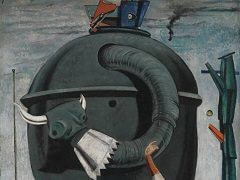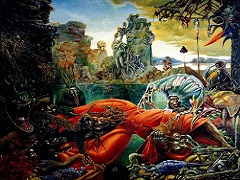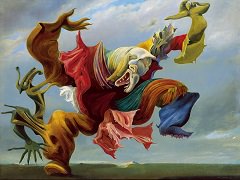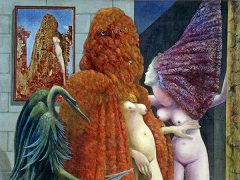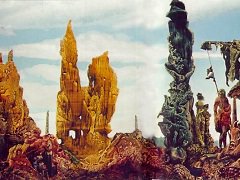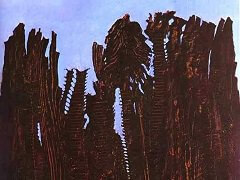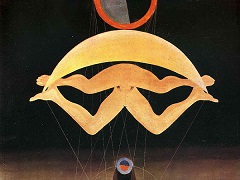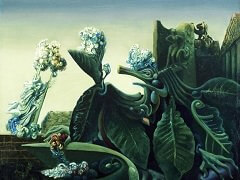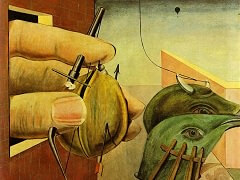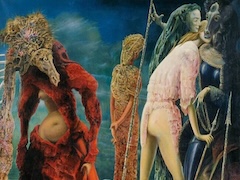Forest and Sun, 1927 - by Max Ernst

Among his many recollections of childhood, Max Ernst often recounted his fear and fascination with a forest that surrounded his home. He wrote of feeling "delight and oppression and what the Romantics called 'emotion in the face of Nature.'" By expressing his thoughts in these terms, Ernst linked himself with the spiritual landscape tradition of Romanticism, which conceived of an invisible realm at work in the natural world.
This dark and mysterious forest scene dates to one of the most creative periods of Ernst's career. Spurred by the Surrealist leader Andre Breton's proclamation of "pure psychic automatism" as an artistic ideal, he developed the innovative technique of frottage, his term for the method of reproducing a relief design (like the surface of a piece of wood) by laying paper or canvas over it and rubbing it with a pencil, charcoal, or another medium. In Forest and Sun, Ernst used this technique to create a petrified forest, which he imbued with a sense of primordial otherworldliness. By scraping away almost-dry paint on the canvas (a process he called grattage), the artist produced the encircled sun at the center of the composition. This painting is one of six variations of the forest and sun theme by Ernst. As in the other five canvases, the tree trunks suggest a letter in the artist's name: in this case, a capital M.

